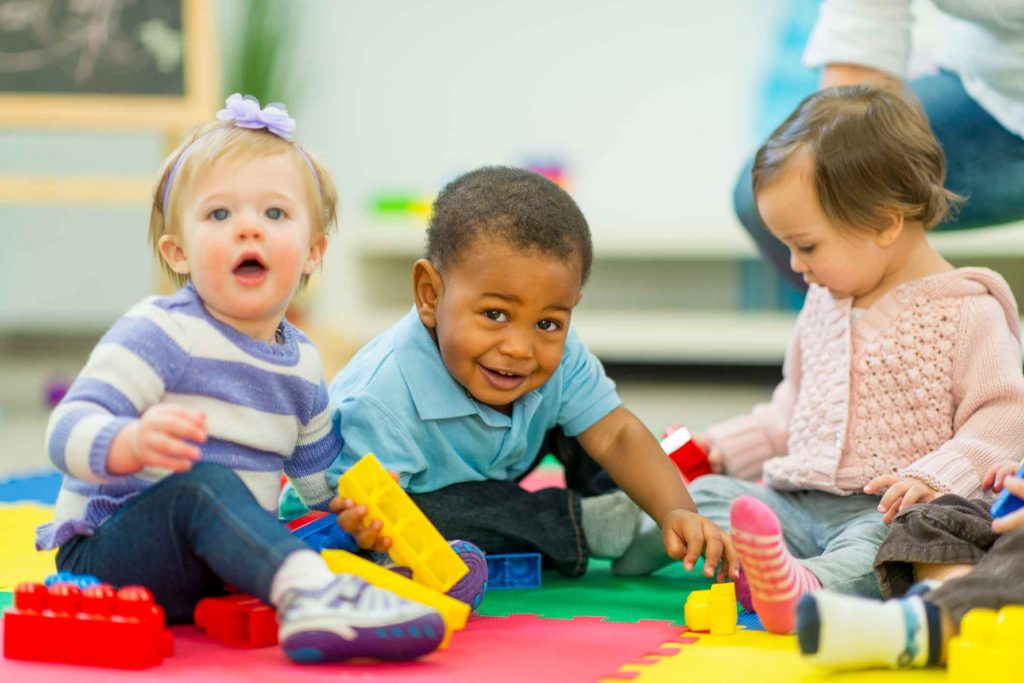So, you think it’s time for your child to experience daycare—that’s terrific news! Their first day will undoubtedly be a huge step that might emotionally overwhelm both you and your child. It’s a special occasion, after all. However, just because you’ll be emotionally distraught doesn’t at all mean you can’t be prepared in other respects.
You cannot simply place your child in a new environment without providing any kind of warning; this can be distressing for them. In this article, you’re going to learn about the benefits of daycare, as well as the numerous yet straightforward steps of preparation that’d make your child’s transition from home to daycare go more smoothly. When all is said and done, all the planning will make things a lot easier for everybody!
The Good Things About Daycare
Attending a high-quality daycare can benefit your child in a variety of ways. Besides, in daycare, there are many opportunities to learn and socialize with their peers that could influence their future academic careers.
In addition, choosing a well-supervised daycare setting, like Lolo’s Childcare and many other providers, can be a great place to boost the development of your child’s skills. From learning to put away their coats to organizing their own stuff, they’ll be disciplined to perform an array of independent tasks at an early age.
That being the case, your child could end up with higher cognitive performance, increased confidence, effective communication skills, developed independence, given opportunities to have fun, and they’ll find it more manageable to transition to the systematized setting of kindergarten. Ultimately, your child’s experiences at daycare can serve as a vital foundation for future learning.
Simple Steps in Preparing Your Child for Daycare
Before putting your child to daycare, there are many things you may need to do as a parent to make it easier for them. Beginning your preparations prior to the first day and involving your child in some decision-making will go a long way toward ensuring a seamless transition from home to daycare.
So, without further ado, here’s how you can prepare your child for daycare.
Talk To Their Pediatrician
First things first, confirm with your child’s pediatrician if it’s alright to put them in daycare, as far as health is concerned. If your child is prescribed to take vitamins or supplements at an appointed time, be sure to discuss this with your chosen daycare provider ahead of time, and clarify the exact dose of the medicine to administer. In daycare, your child’s exposure to disease-causing germs might increase, so ask their doctor for further advice.
Tell Them About the New Place
If your kid is old enough to comprehend what’s being said, tell them about the new environment, they’ll be taken to. However, it’s still possible that your child won’t like the idea of being away from you and home. Instead of getting too affected by their cries, give them enough time to adjust.
When you’re introducing your child to daycare, set a positive tone. Tell them about the fun there, including the new friends they’ll make, all the new toys they’ll get to play with, and all the other fun things they can do. Simply tell them the things you think will interest them the most. They’re your child, after all.
Build Similar Routines
Suppose you’ve decided which daycare facility to send your little one to, learn about their schedules, and implement such a timetable at home. However, be sure to be gradual so they’ll hardly notice the change in their routines.
For instance, if the daycare’s napping time is set in the afternoon, take a few days to dissuade your child from getting their usual morning naps and let them get used to taking a nap in the afternoon.
Plan Their Breastfeeding
If your child still feeds breast milk, then you need to plan. Have a quality pump that’ll make milk pumping easier for you, then learn how to store the milk correctly. If your little one isn’t used to milk bottles yet, this could be the perfect time to start using one. In addition, if you wish to skip the milk pump and use milk formulas instead, look for a milk brand that your child likes.
Have The Essentials Ready
At daycare, you’ll need more of everything than you think! To begin, you’ll need a lot of milk bottles, particularly on days when you’re too exhausted to wash the used ones! Additionally, purchase diapers in bulk to get better bargains and to stock up on diaper wipes and other items from the brand your baby prefers. Besides that, purchase additional packs of your child’s preferred cereal. And, of course, invest in a solid and durable bag with plenty of compartments for storing everything with ease!
Have Spares of Their Favorites
Aside from preparing the essentials, it might also be a great idea to have spares of the stuff they like. Your child has most likely developed an attachment to their favorite teddy bear, blanket, or other items they find comfort with. Having duplicates of such items at the daycare might reassure them and serve as their reminder of home.
Though you can always bring the original stuff to and from the daycare facility, it might get lost or ruined. So, prevent the worst from happening by letting them bring the duplicate stuff to daycare. You can start by making the spare ones look and smell like the original stuff. Likewise, if they like using a specific set of utensils at home, buy the same set to facilitate their mealtimes at the daycare.
Stop By the Daycare
If possible, make multiple visits to the daycare with your child. Give them time to become acquainted with the place and to interact with the other children and toys. This will make it easier for them during their start there, as they’ll be more comfortable with the people and the environment. The more you can do to familiarize them with the facility, the better.
Furthermore, if you’re with them at the daycare center, they’ll be much more relaxed and will not associate the location with your departure. How long this process takes varies according to the child – some adjust easily, while others take more time. For this reason, it’s essential to get started as early as possible!
Talk To Their Daycare Provider
Feel free to communicate your preferences to your daycare provider. Because you are the one who knows your child best, they’ll gain a better understanding of your child through you. Even if you think something is a private matter, it matters to the facility.
Suppose your child has difficulty transitioning from breast milk to bottle or if you’re still searching for the optimal bottle nipple level. Those pieces of information will be highly beneficial for the providers. Helping them familiarize the ins and outs of your child’s habits and routines will make the transition much easier for everyone, particularly for your kid.
Apart from those examples, other things to consider discussing with your child’s daycare provider include their sleep schedules, usual feeding time, and, of course, any food allergy or sensitivities. The more they know, the better they’ll handle and take care of your child.
Decide Who the Contact Person Will Be
It’s important to notify the daycare provider of an emergency contact person, so choose one beforehand. Usually, the person closest to the facility is the most preferable. That being said, in the event that that individual is not present, the facility might need to have another parent’s phone number and an additional person as a backup. Be sure to notify the other person, though; for example, your friend should be informed that they may receive a call from your child’s daycare if both you and the contact person are unreachable.
Make Them Comfortable in Group Settings
It’s essential to get your child engaged in some small group activities before their first day at the daycare. When children are given opportunities to spend time with other young kids, their communication skills could improve, and they might be more accustomed to kids their own age.
If possible, try to maintain some distance from your child during class so they’ll start exploring and socializing with the other kids without your presence. This could develop their confidence and independence so that when their first day at daycare comes, they’ll feel more secure without you nearby.
Start On a Part-Time Basis
Some daycare centers allow children to start on a part-time basis to familiarize themselves with the facility before enrolling full-time. If your daycare permits it, find a way to integrate your child into the daycare at a pace that’s comfortable for both of you.
Consider dropping your child off at the facility for at least an hour or more and explaining that you’ll be returning to pick them up in a while. Following that, schedule a half-day visit, only picking them up for lunch. Starting daycare slowly can help reduce stress for everyone.
Create A Goodbye Routine
A goodbye routine can be both comforting and fun to do. Before you drop your child off at the daycare facility, set up a goodbye routine, maybe a fist bump or a kiss. This will provide comfort for both of you.
If your kid is old enough to understand that you’ll leave, the routine may help lessen their worries on their first day being apart from you and their accustomed environment.
Wrapping Up
Making the transition from a carefree and laid-back summer to a daily schedule like daycare demands preparation and discipline.
Make your child feel more at ease on that first day of daycare by planning ahead of time. Take the steps mentioned above slowly, and the overall daycare experience could be pleasing and beneficial for both you and your little kid!













